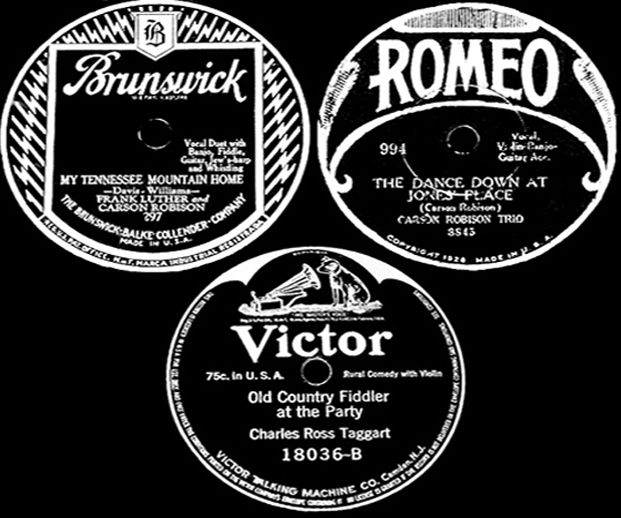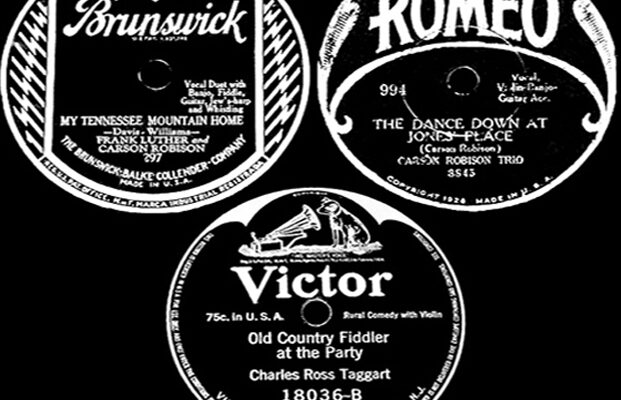Fiddlers’ conventions became popular in East Tennessee and surrounding areas around the turn of the century and grew even more prevalent in the 1920s, 30s and beyond.
Most rural and many urban Tennesseans had fiddles resting in their closets begging to be played. Conspicuously absent were violins, suggesting a difference between the two instruments or perhaps the two musicians. One dictionary defines a fiddle as “a stringed instrument, see “violin.” Flipping the pages to the definition of a violin produces a similar result, “a stringed instrument, see “fiddle.” To complicate matters, some old-time fiddlers referred to their instruments as violins.
The unfretted fingerboard 4-string devices were heavily utilized at country get-togethers where “choose your partner” was a familiar utterance interspersed between the screeches and screams of fiddle strings. The fiddle became the brigadier general of the traditional instruments performing old-style music. The resulting sound was exhilarating and fans adored it.
The uniqueness of a fiddler was playing by ear and rarely bowing and fingering a tune the same way twice, preferring instead to improvise on selections. This was not the case with the more rigid violinist who received his or her playing orders from sheet music resting on a stand. Fiddle music often received a bad wrap from people who played music in public but had not yet mastered the instrument. Most seasoned fiddlers readily invited novices to play along with them to help them become skilled at their craft.
A typical fiddlers’ convention usually began in early afternoon and continued into the night. At 1:00 p.m., there would be an open-air concert kickoff with as many as a dozen fiddlers playing at the same time. Thirty minutes later, with the convention now in full swing, the tempo changed producing two hours of breakdown music that echoed into the surrounding hills. Its manner mirrored the simple yet often capricious life of the mountainous community.
Some musical notes appeared reluctant to emerge while others were as flat as a glass of cola that had been long neglected. None of this mattered because the performers were playing the music they loved best to a highly appreciative audience that showed its approval.
The most atypical song of the evening occurred when each fiddler played a different tune in unison with others. The combination of noise, ranging from E flat to canine howls, often qualified for a disturbing the peace citation. The hound dogs present in the crowd settled themselves on their haunches at a safe distance and howled a mournful accompaniment on the refrain. When the smoke cleared and the last fading echo of melody took refuge in the hills, no one appeared to have been injured and the magistrate, who was likely a fiddler, issued no warrants.

The evening continued with a compilation of tunes from a dozen fiddlers sawing away on “Dixie,” “Arkansas Traveler,” “'Billy in the Low Ground,” “Fox Chase” and “Devil's Dream.” Next came a fiddler, described as having plenty of resin on his bow, fingering and bowing to “Bonaparte’s Retreat.” Seven fiddlers followed by grinding out the ditty, “Goin' Long Down to Town.”
The show concluded with a combination of performers playing: “Fire on the Mountain,” “Leather Breeches,” “Sugar in the Gourd,” “Please Don't Shoot the Fiddle,” “Down in Bolson’s Hollow,” “Peter Went A Fishin’” and “Sally Goodin.”
Old-time fiddlers had no place at Grand Opera concerts, but instead were more suited for the Grand Ole Opry. But that wouldn’t occur until 1925 when WSM’s Judge George Hay sounded his distinctive foghorn and invited fiddlers, the likes of Uncle Jimmy Thompson, to entertain at the Ryman Auditorium and over the radio airways.

Comments are closed.